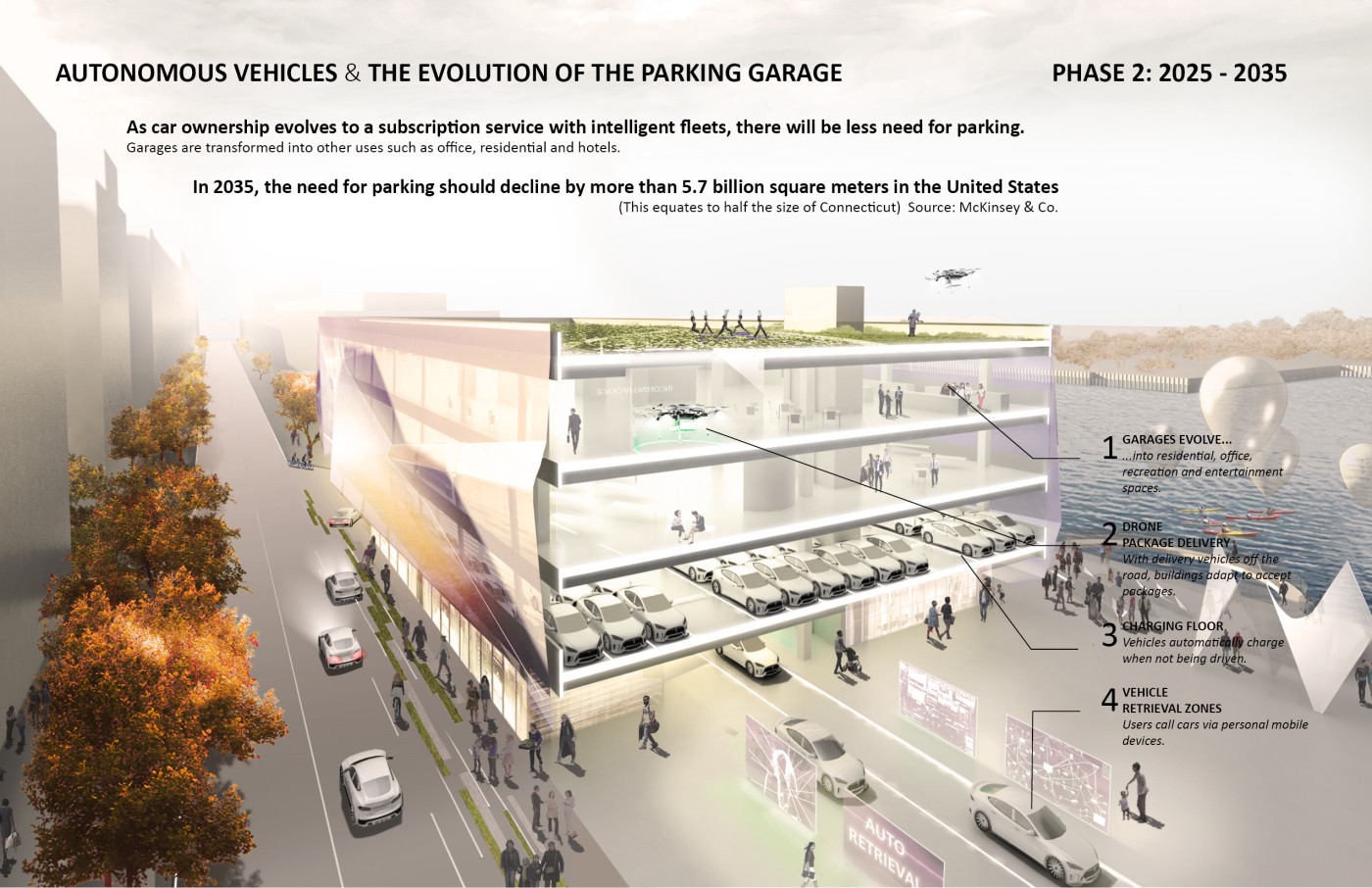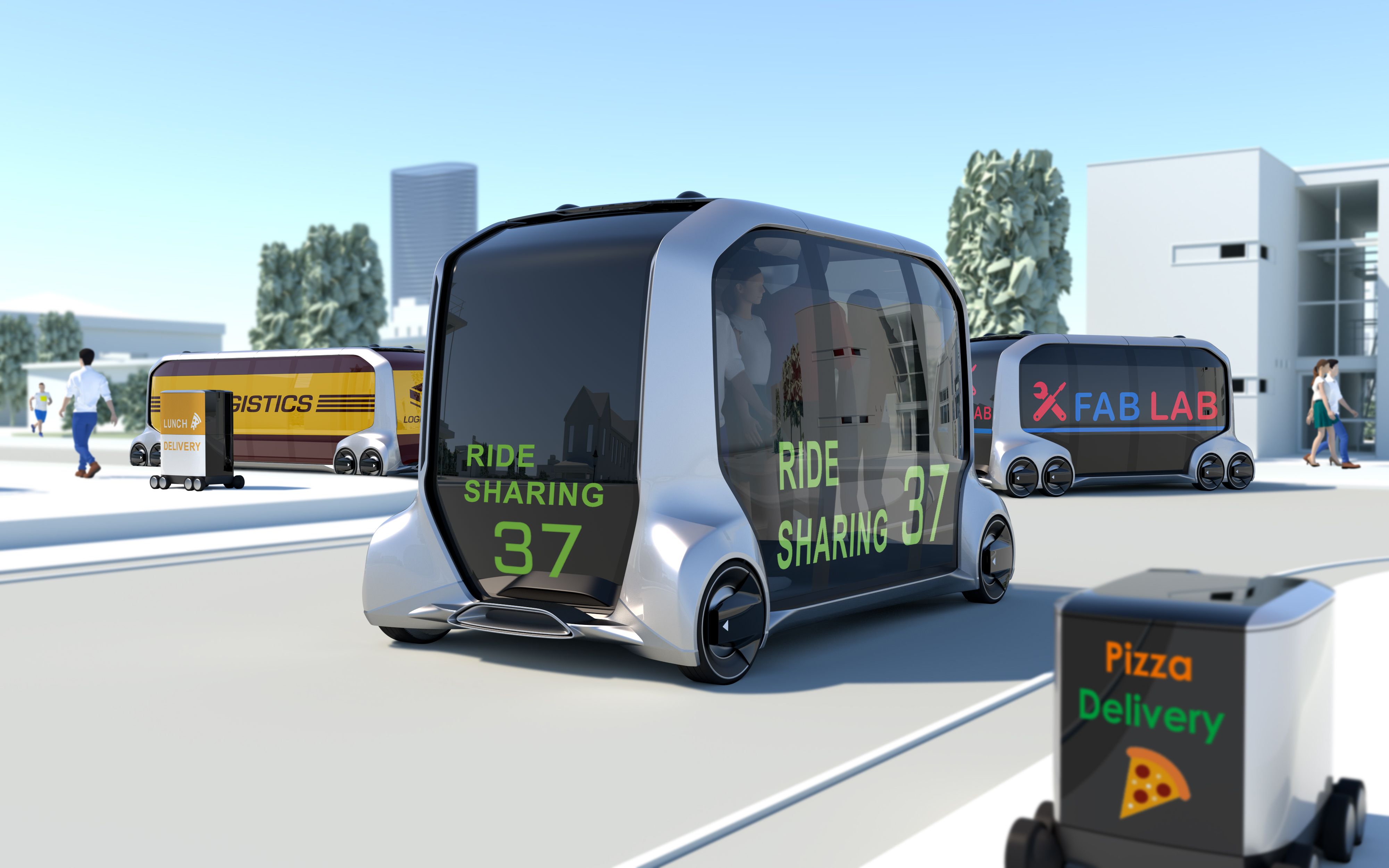How Driverless Cars Could Change Where We Live

Cars spend just 5% of every day in motion. They occupy some 800+ million parking spaces while not in use, taking up roughly 25,000 square miles of the United States. Even if all of the nation’s vehicles were parked at once, we’d have over 500 million parking spots open. Autonomous car sharing services could open all this land to new uses – including affordable housing in densely populated cities, where demand sometimes outstrips supply.
But even beyond reducing the waste of all that parking, fleets of autonomous vehicles could shake up property values by essentially eliminating the extra cost of housing that’s located near public transit hubs. Traditionally, an easy commute makes office and residential buildings more expensive. Real estate development is often clustered around new rail systems or lines as they’re built, and then sold or rented for some of the highest prices in any given city. But when commuters can simply call for a car instead of getting on the train, proximity to public transit becomes a lot less relevant.

Throw driverless shuttles and buses into the mix, and buildings or entire neighborhoods that once would have seemed less attractive due to their location are suddenly a lot more livable. That effect could even extend to suburbs and exurbs. While cities will undoubtedly remain popular, the ability to live further outside of town while retaining high-paying jobs and access to social and cultural resources could reshape the demographics of all kinds of communities. Places that are considered too far away from major cities by today’s standards could become the “bedroom communities” of tomorrow. Is that a good thing, or will it just encourage sprawl? The answer remains to be seen.
Of course, virtually all of this is predicated on driverless cars being available – and affordable – to just about everyone. But with the rising popularity of ride sharing services like Uber and car sharing services like Car2Go, it’s clear that there’s a demand for more private and intimate travel experiences without the burdens of car ownership. It’s also worth noting that autonomous vehicles available by subscription could make travel more accessible to people with disabilities and the elderly. However it ends up arriving, automated vehicle technology will certainly shake things up.